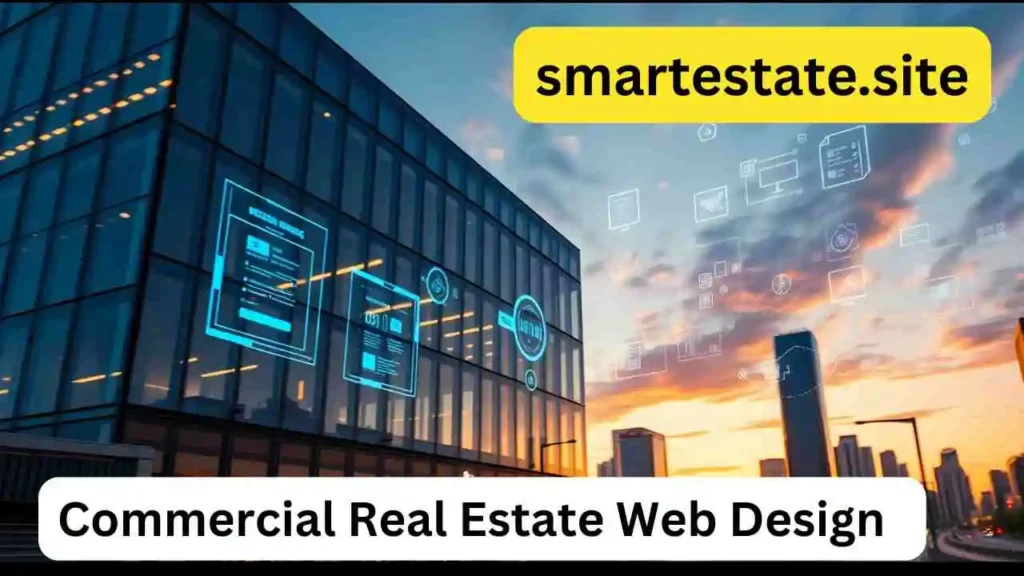Let’s be real—if your commercial real estate website still looks and behaves like it did in 2018, you’re probably leaving money (and leads) on the table. Buyers, tenants, and investors expect more now. Not just a clean interface or fast loading time—they want interaction, personalization, even a sense of trust from a few scrolls and clicks. It’s wild how much a design tweak can affect a deal.
And with 2025 well underway, the trends have shifted yet again. What worked last year might feel clunky today. So, let’s dig into the real strategies—stuff that goes beyond surface-level design—and explore what’s making commercial real estate websites win (or lose) this year.
Table of Contents
11 Commercial Real Estate Web Design Strategies
Strategy #1: Mobile-First, Always
The Shift to Smartphones
Quick question—when was the last time you searched for a property on a desktop first? Probably not recently, right? That’s exactly the point. Over 70% of CRE traffic now comes from mobile devices. If your site isn’t built with mobile as the foundation, not just a mobile version slapped on later, users will bounce faster than you can say “triple net lease.”
Responsive vs Adaptive – What’s Best?
Responsive designs fluidly adjust to screen sizes, while adaptive ones load different layouts depending on the device. There’s no universal winner, but responsive tends to offer better SEO results and smoother UX. In short: responsive is your friend.
Strategy #2: Speed is (Still) King
Page Load Time and Bounce Rates
Your bounce rate increases with each additional second it takes for your site to load. Users won’t wait, especially on mobile. In fact, Google research shows that a 1-second delay can reduce conversions by 20%. You might think your site feels fast, but have you tested it?
Tools to Optimize Speed
Make use of materials such as Lighthouse, GTmetrix, or Google PageSpeed Insights. Compress images. Minimize CSS and JavaScript. And, for heaven’s sake, ditch those massive carousels no one clicks on anyway.

Strategy #3: SEO-Driven Structure
Keyword Mapping for Listings
It’s not just about throwing keywords on a page. It’s about aligning keywords with user intent—“office space downtown LA” or “industrial warehouses near me”—and mapping those to category and property pages. Real estate SEO in 2025 is very location-focused.
Clean Architecture and Internal Linking
A logical site structure—think: Homepage > Property Type > Location > Listing—helps both users and search engines. Internal links should feel natural, like they’re helping the reader, not just ticking an SEO checkbox.
Strategy #4: Interactive Property Listings
Virtual Tours and 3D Renderings
Static photos are yesterday’s news. With affordable 3D tech and virtual tours now the norm, listings that don’t include them feel, well… underwhelming. Buyers want to walk through spaces virtually before they commit to seeing them in person.
Filters, Maps, and Real-Time Availability
Interactive maps, smart filters (like square footage sliders), and real-time availability updates make your site not just helpful—but necessary. It’s about function more than flair here.
Strategy #5: Make Navigation Effortless
Mega Menus vs Hamburger Menus
Mega menus work great on desktop, especially if you have a lot of property categories. On mobile, hamburger menus are fine—but keep them simple. Avoid hiding crucial pages three layers deep. Nobody’s got time for that.
Site Hierarchy Tips
Think like a visitor. What would they want to see first? Use breadcrumbs, simple headers, and never overwhelm with too many choices. Less really is more.
Strategy #6: Compelling, Custom Visuals
Drone Footage, Real Imagery, and Illustrations
There’s something undeniably engaging about seeing drone shots of a commercial space or a timelapse of foot traffic around a property. It says: “We care. This isn’t just another cookie-cutter listing.”
Why Stock Photos Just Don’t Cut It
Stock images feel cold and inauthentic. People know. Even if they can’t pinpoint why, they just sense it. Custom visuals, even if slightly imperfect, build more credibility.
Strategy #7: Build Trust with UX Writing
Clear CTAs That Guide Action
“Download the brochure.” “Schedule a tour.” “Ask about lease terms.” These calls to action should be sprinkled throughout pages—not just at the bottom. And yes, make them obvious.
Microcopy That Adds Reassurance
A small “We won’t spam you” below a form field goes a long way. UX writing is all about reducing hesitation. Every tiny word matters.
Strategy #8: Include Localized Content
Neighborhood Guides and Local Market Info
Show that you’re not just listing properties—you know the area. Create pages that talk about nearby transit, business hubs, even local cafés. It’s surprisingly persuasive.
Using Schema for Local SEO
Schema markup, or structured data, aids Google in comprehending your content. When feasible, use the local business, review, and event schemas. It boosts your visibility in rich snippets and maps.
Strategy #9: Integrate CRM and Lead Capture
Forms That Actually Get Filled
Keep forms short. First name, email, and maybe a question like “What kind of space are you looking for?” That’s usually enough. Avoid long dropdowns unless absolutely necessary.
Connecting with HubSpot, Salesforce, etc.
Direct integration with CRMs helps your team respond faster. Set up triggers—when someone downloads a brochure, assign a follow-up task immediately. It’s the little automations that close deals.

Strategy #10: Prioritize Accessibility (ADA Compliance)
Screen Reader Compatibility
Your site needs to work for everyone. That includes users with visual impairments. Use alt text properly. Ensure your navigation is usable via keyboard. It’s not just ethical—it’s often legally required.
Color Contrast and Font Sizing
Don’t use gray text on white backgrounds. It’s subtle, yes, but also unreadable for many. Stick to high-contrast combos and scalable fonts.
Strategy #11: Analytics and Conversion Tracking
Behavior Flow and Heatmaps
Are you curious about how people use your website? Tools like Hotjar or Microsoft Clarity show you where they click, hover, scroll—or just get confused and leave.
What Metrics Actually Matter
Traffic is nice, but leads matter more. Track form submissions, CTA clicks, time on listings, and bounce rates from key landing pages. Everything else is just noise.
Conclusion
Here’s the thing—there’s no one perfect website for commercial real estate. What works in Manhattan might flop in Miami. But these 11 strategies? They’re as close to universal as it gets in 2025. Whether you’re revamping a dated site or building fresh from scratch, prioritize clarity, speed, and authenticity. That’s what people really want.
FAQs
1.What is the most important component on a website for commercial real estate?
A fast, mobile-friendly property search experience. Everything else builds on that.
2. How often should I update my website design?
Every 2–3 years, at minimum. But keep updating content regularly—monthly, ideally.
3. Are virtual tours really necessary in 2025?
Absolutely. They’ve gone from “nice-to-have” to expected. Especially for high-ticket properties.
4. How much does the new look of a culturally diverse environments website commonly price?
It varies, but expect anywhere from $5,000 to $30,000 depending on features, integrations, and content.
5. Do I need a developer or can I use a platform like Wix or Squarespace?
Those platforms are fine for small firms. But if you’re serious about SEO, speed, and scalability? A custom WordPress or Webflow build is often worth it.
